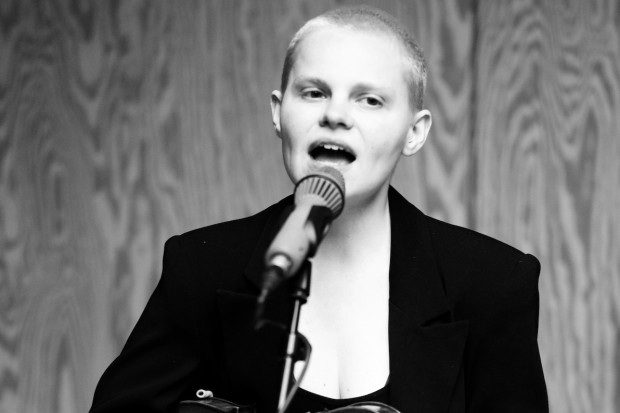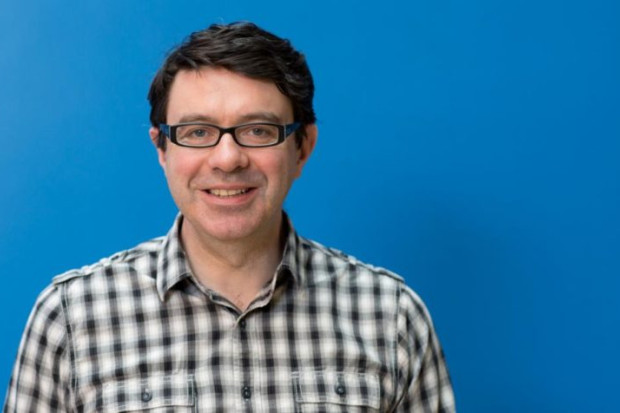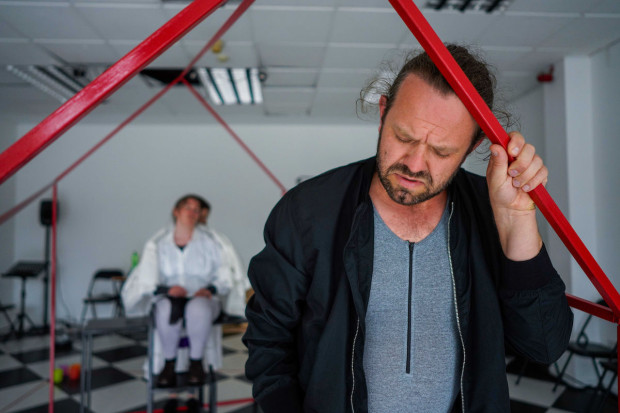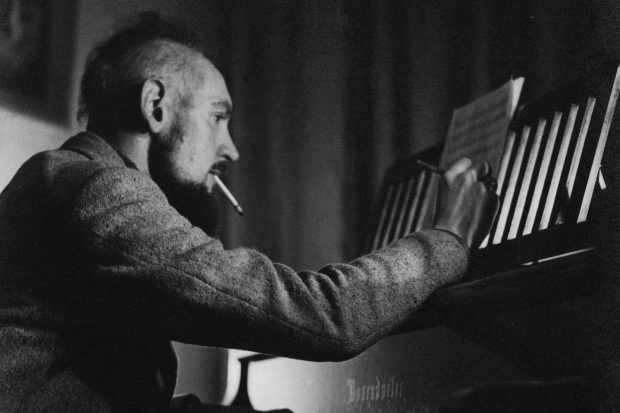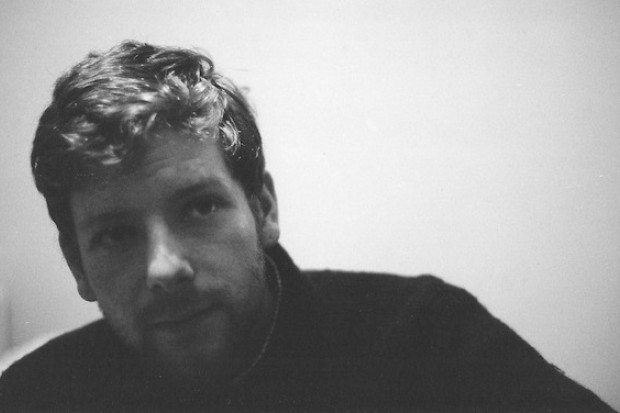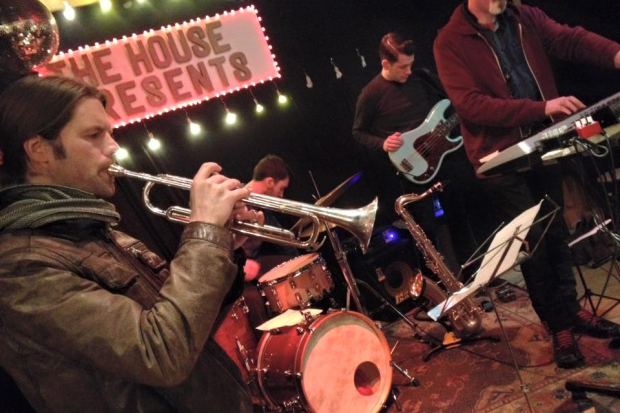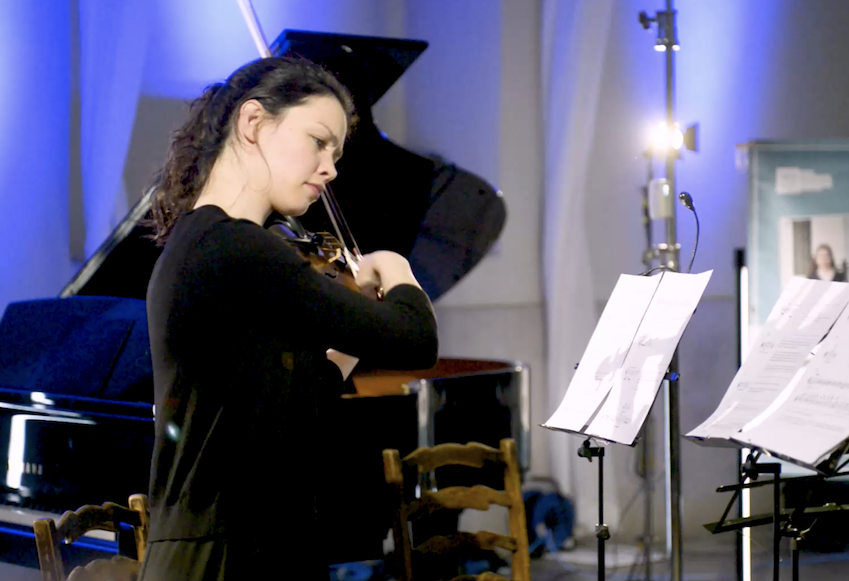
Mairéad Hickey performing at the Ortús Chamber Music Festival.
Some Kind of Magic in Cork
I quite like a festival where none of the concerts runs longer than an hour. While there’s lots to be said for the immersiveness of a run of two- or three-hour concerts, shorter events never leave you feeling overwhelmed. It’s the difference between having a picnic and going out for a meal.
So we come to Ortús festival, which took place in Cork on 25–27 February, and which is now available to watch online. The festival, now in its seventh year, focuses on chamber music, especially works for strings, and featured four concerts over three days. Violinist and festival co-founder Mairéad Hickey featured prominently, performing in four of the seven works featured, including a new solo violin work by Sebastian Adams. All eight performers featured several times, though. With Hickey were violinists Siún Milne and Fumika Mohri, violists Sara Ferrández and Sindy Mohamed, cellists Brannon Cho and Alexander Kovalev, and pianist Fiachra Garvey.
Sebastian Adams’ pensive 2021.3 (For Mairéad) was commissioned and premièred by Hickey for a Kaleidoscope concert in Portobello, Dublin, earlier this year. As the only work by a living composer, and as the opener for the festival, it was good programming to have a gentler contemporary work. Adams’ professed interest in ‘constant extreme jumps in texture’ manifested only once in this short piece, when slow harmonics and consonant couplets – after a slow walk to the stratosphere – gave way to a jig.
Hickey took the solo part for Ernest Chausson’s Concert for Violin, Piano, and String Quartet, joined on stage by Mohri, Milne, Ferrández, Cho and Garvey. Chausson’s rich, chocolatey harmony sounded wonderful with the performers; Hickey’s solo part gliding high, and the quartet’s sound robust and homogeneous, anchored by Garvey’s piano.
The Saturday afternoon concert was devoted to one work: Mozart’s string trio in E-flat major, performed by Hickey, Ferrández and Kovalev. Mozart called this a divertimento, which belies its scope and scale; the six-movement work lasts just shy of an hour.
The most notable movement is a fairly typical (and wonderful) Mozartean formal trick: a set of ‘intertwined’ variations. The first half of the theme is played, followed by the first half of variation one, then the second half of the theme, and the second half of the variation, and this pattern persists for the first half of the movement.
Something amazing
There seems to be some kind of magic that occurs when a composer decides to write a piano quintet. It may be a matter of bias – that the well-known examples are also the best – but to my knowledge, few prominent composers attempted more than a couple of examples of the form, and those that have have tended to produce something amazing. Perhaps it’s the instruments themselves. The piano can contrast the strings as well as it can blend with them, and the extra violin over a piano quartet provides a balance to the musculature and weight of the piano. But so many prominent examples of the genre are a match for symphonies in scope, and string quartets in intimacy.
So unfolds Dvořák’s second quintet. The composer had been dissatisfied with his first attempt in the genre, and the second began as a reworking of it, before taking its own direction. At Ortús, it was performed by Mohri, Milne, Mohamed, Cho and Garvey.
Hearing the performers, you’d be forgiven for thinking they were an established ensemble, so well-balanced and controlled was their sound together. This was particularly true in the second movement, where the melancholy main sections flowed into the contrasting brighter moments in the most fluid, natural way.
The quintet is a substantial work, and was paired with Five Melodies for Two Violins and Piano, an arrangement by Levon Atovmian of existing Shostakovich tunes made with the composer’s permission, performed by Milne, Mohri, and Garvey. These lightweight, pretty pieces were programmed after the Dvořák but, in a wise change, performed first; like the opening concert, there was a sense of starter-and-main that wouldn’t have worked if the pair had been reversed.
Showcase
Milne, Mohamed, and Kovalev joined Garvey in the first half of the final concert for Beethoven’s Op. 16 piano quartet, a work fairly typical of the composer’s early style, and an arrangement of a quintet for piano and winds that he had written at 26. Then Rimsky-Korsakov’s five movement string sextet in A major brought the festival to a close, with Mohri, Hickey, Ferrández, Mohamed, Cho and Kovalev performing. Although not an especially well-known work, it made an excellent culmination and showcase of the talents of the musicians performing it, whether it was Mohri’s dazzling high passages on first violin or Cho’s energetic, full cello sound, or the beautiful way the violins emphasise the harmony in the still passages of the fourth movement, or the energetic, brisk ensemble playing in the last movement.
And so to that extent the festival succeeded where it matters most: in the performances. Unfortunately, the broadcast version was marred by technical issues, most noticeably in a distracting ‘echo’, especially in the Chausson and the Dvořák. It certainly didn’t help that these were two of the best performances of the festival, alongside the Rimsky-Korsakov. For the audience lucky enough to be there in person, these must have been memorable concerts indeed.
Visit http://ortusfestival.ie/
Published on 23 March 2022
Brendan Finan is a teacher and writer. Visit www.brendanfinan.net.












